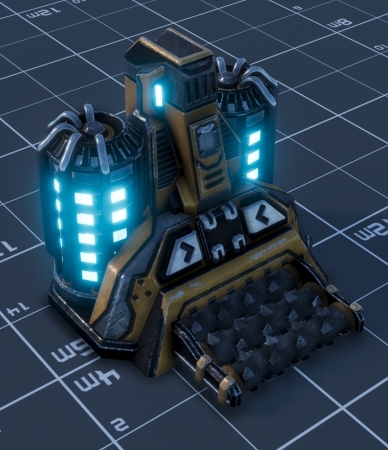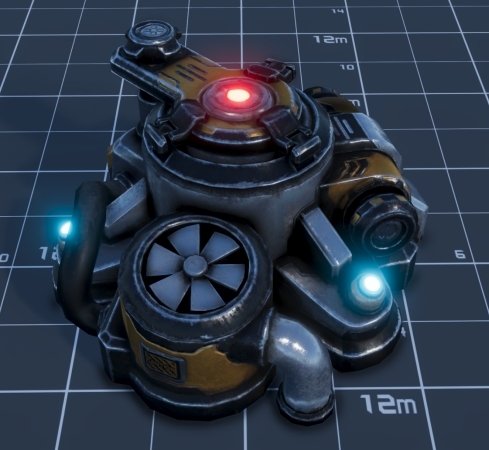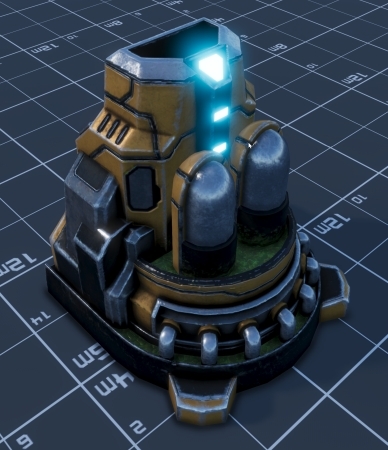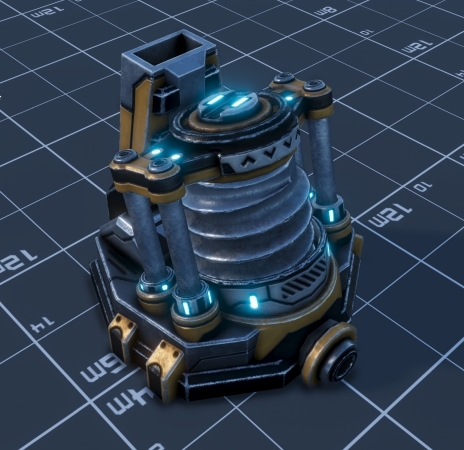
Nov 29, 2019
The Riftbreaker - voidreaver
The tech tree in The Riftbreaker is expanding all the time. We make adjustments to existing technologies, change the research patterns and add completely new items to the list. Today we are going to continue showing off the newest additions to Ashley’s tech arsenal in the energy department. The two we are about to show you are very different from each other and provide some exciting new ways to utilize what the planet offers you.

The first one is the Carbonium Power Plant. It can only be placed directly on a Carbonium deposit. Thanks to its massive grinder it easily breaks up carbonium ore into usable chunks and uses them as a fuel source. It might seem wasteful because Carbonium is necessary to construct almost all buildings in a Riftbreaker’s base. However, you need to remember that the largest part of the early base setup is centered around establishing a power grid that can later sustain the other buildings. You can save the Carbonium you’d otherwise use to build Solar Panels and Wind Turbines and use it as fuel. However, the Carbonium field will eventually run dry. You have to make a choice - short-term gain or sustainability.

The other building we would like to show you today is the Geothermal Power Plant. It utilizes the natural processes happening under the surface of the planet. Just like on Earth, there are underground rivers and lakes on Galatea 37. In some spots, the heat emanating from within the planet raises the water temperature so much that it starts boiling and turns to steam, increasing pressure. If the pressure breaks a certain threshold, the surface will rupture and a steam vent will appear. The Geothermal Power Plant is built directly on steam vents and uses hot steam to power the turbine within the plant, generating electricity. It is an eco-friendly solution but requires you to find a steam vent first.
We hope that we will be able to show you some of these buildings in action soon. Join our streams every Tuesday (Mixer) and Thursday (Twitch) to catch some Riftbreaker action. We have also shared the pre-alpha build with select streamers - they usually share info about their streams on our Discord - www.discord.gg/exorstudios.
Other social media:
www.facebook.com/exorstudios
www.twitter.com/exorstudios
www.mixer.com/exor_studios
www.twitch.tv/exorstudios
www.youtube.com/exorstudios

The first one is the Carbonium Power Plant. It can only be placed directly on a Carbonium deposit. Thanks to its massive grinder it easily breaks up carbonium ore into usable chunks and uses them as a fuel source. It might seem wasteful because Carbonium is necessary to construct almost all buildings in a Riftbreaker’s base. However, you need to remember that the largest part of the early base setup is centered around establishing a power grid that can later sustain the other buildings. You can save the Carbonium you’d otherwise use to build Solar Panels and Wind Turbines and use it as fuel. However, the Carbonium field will eventually run dry. You have to make a choice - short-term gain or sustainability.

The other building we would like to show you today is the Geothermal Power Plant. It utilizes the natural processes happening under the surface of the planet. Just like on Earth, there are underground rivers and lakes on Galatea 37. In some spots, the heat emanating from within the planet raises the water temperature so much that it starts boiling and turns to steam, increasing pressure. If the pressure breaks a certain threshold, the surface will rupture and a steam vent will appear. The Geothermal Power Plant is built directly on steam vents and uses hot steam to power the turbine within the plant, generating electricity. It is an eco-friendly solution but requires you to find a steam vent first.
We hope that we will be able to show you some of these buildings in action soon. Join our streams every Tuesday (Mixer) and Thursday (Twitch) to catch some Riftbreaker action. We have also shared the pre-alpha build with select streamers - they usually share info about their streams on our Discord - www.discord.gg/exorstudios.
Other social media:
www.facebook.com/exorstudios
www.twitter.com/exorstudios
www.mixer.com/exor_studios
www.twitch.tv/exorstudios
www.youtube.com/exorstudios


































